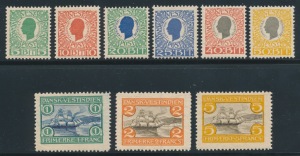The opening of the Panama Canal proved the military dictum that by expanding your borders you need to further expand your area of influence in order to defend those new borders. Before the canal, ocean traffic between the east and west coasts of the United States was either by ship (unloading at either Panama or Nicaragua and reloading the ship on the other side) or else around the tip of South America, a multi thousand mile journey that was dangerous even in the early twentieth century. The canal had been a dream for centuries and had been attempted since the 1880s. When it opened in 1914, it changed the relationship of the American coasts and how they traded with each other. From a military point of view, these trade routes needed to be protected. But more importantly, an enemy of the United Sates could take control of the canal and move ships and military might to the west coast of the United States, forcing a two front war and making the American homeland much more difficult to defend. When WWI broke out in 1914, the United States took this threat seriously and began plans to protect the canal from foreign influence and invasion.
The Danish West Indies contained three main islands that could be used to control the approach to the canal and provide military bases to defend it. Denmark had colonized these islands centuries before, largely to get in on the slave based sugar trade. While sugar prices were high and slave prices low, the islands were very profitable, but by the early part of the twentieth century, the Danes viewed the islands as an old non-producing asset. Since it was clear that Denmark couldn’t defend the islands anyway, and that the US could control them whenever they wished, in 1917 the Danish West Indies were sold to the United States and have been a territory ever since.
The Danish West Indies occupy a place in US philately unlike any other. They are considered a US possession, and yet the US government never issued any stamps for the old DWI while they were under US control. The stamps that we collect as the issues of DWI are all Danish issues and as such are very similar in feel to the nineteenth century issues of Denmark. The earlier issues were similar in design to the then current Danish issues, but the later issues were printed and designed solely for the colony and were some of the most attractive stamps in our hobby.
The US has called the Danish West Indies St. Thomas, which is the name of the largest city on the most populous island. US stamps have been used there since the islands were acquired and continue to be used there today. We are four years away from the centennial of the acquisition DWI as a US territory. A US commemorative or general press awareness of the history of these islands could give the stamps of the Danish West Indies a boost in popularity. The entire philatelic production of the islands is some 80 different major Scott numbers and can be bought for only a few hundred dollars complete. The country offers hundreds of varieties as listed by Scott (and even more as listed by Facit, the Scandinavian specialized catalog which lists the Danish West Indies because it is a Danish Colony


